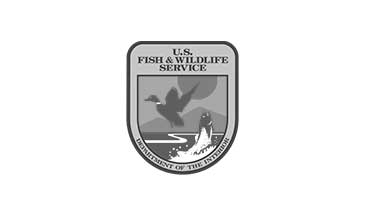Bats
 Bats breed in fall but don’t actually give birth until the following spring. For about two weeks after the mother gives birth, her baby is completely dependent on her for survival. While the mother cares for her baby, she is also completely vulnerable. Consequently, mother bats need to find particularly sheltered roosts to use as nursery colonies. If your home provides that shelter, mother bats are all too happy to move in.
After baby bats get big enough, they start flying and hunting on their own. Young bats explore more than their adult counterparts and tend to get lost more frequently. If baby bats get lost in your home, mother bats often end up coming in to look for them. Bats can enter homes through gaps as small as a dime. They frequently squeeze through air intakes, exhaust vents, and openings around utilities. Identifying and patching up likely access points is the best way to keep bats from making your home their roost.
Bats breed in fall but don’t actually give birth until the following spring. For about two weeks after the mother gives birth, her baby is completely dependent on her for survival. While the mother cares for her baby, she is also completely vulnerable. Consequently, mother bats need to find particularly sheltered roosts to use as nursery colonies. If your home provides that shelter, mother bats are all too happy to move in.
After baby bats get big enough, they start flying and hunting on their own. Young bats explore more than their adult counterparts and tend to get lost more frequently. If baby bats get lost in your home, mother bats often end up coming in to look for them. Bats can enter homes through gaps as small as a dime. They frequently squeeze through air intakes, exhaust vents, and openings around utilities. Identifying and patching up likely access points is the best way to keep bats from making your home their roost.
Raccoons
 Raccoons tend to give birth from March to June. A single raccoon mother generally gives birth to a litter of three to five babies. Mother raccoons often infiltrate chimneys and attics as dens for raising their cubs. For seven or eight weeks, the mother will use their den as a homebase to return to with foraged food for her young. Once the raccoon cubs grow old enough to forage for food themselves, the litter leaves the den permanently.
Young raccoons stick pretty close to the den where they grew up, especially if there’s food nearby. They’ll hide in shady areas like beneath porches, decks, or crawl spaces, and come out to forage at night. Raccoons are notorious for their dumpster diving antics, but they also dig up lawns looking for grubs. Keeping raccoons away means depriving them of both daytime shelter and night time food. Protect your garbage can and fence off the undersides of porches and decks.
Raccoons tend to give birth from March to June. A single raccoon mother generally gives birth to a litter of three to five babies. Mother raccoons often infiltrate chimneys and attics as dens for raising their cubs. For seven or eight weeks, the mother will use their den as a homebase to return to with foraged food for her young. Once the raccoon cubs grow old enough to forage for food themselves, the litter leaves the den permanently.
Young raccoons stick pretty close to the den where they grew up, especially if there’s food nearby. They’ll hide in shady areas like beneath porches, decks, or crawl spaces, and come out to forage at night. Raccoons are notorious for their dumpster diving antics, but they also dig up lawns looking for grubs. Keeping raccoons away means depriving them of both daytime shelter and night time food. Protect your garbage can and fence off the undersides of porches and decks.
Geese
 Most of us have had an unpleasant run-in with a goose at one point or another. The birds are notoriously cranky and territorial. If they seem even more cantankerous than usual over the summer, it’s not your imagination. Geese mate and nest from February to mid May. By June, their goslings have almost always hatched and begun moving around. Geese are never more aggressive than when they’re protecting their young.
Mother geese like to lead their goslings between sources of water and food. They can graze on yard grass for hours on end, stopping only to find water. Geese infestations are particularly common if your home is on or near a lake or river. The best way to prevent geese from hanging around your yard is to make the water nearby harder to access. Find ways to block the path from the water to your lawn. You could install fencing or other barriers, plant shrubs, or just let the vegetation near the water’s edge grow.
Most of us have had an unpleasant run-in with a goose at one point or another. The birds are notoriously cranky and territorial. If they seem even more cantankerous than usual over the summer, it’s not your imagination. Geese mate and nest from February to mid May. By June, their goslings have almost always hatched and begun moving around. Geese are never more aggressive than when they’re protecting their young.
Mother geese like to lead their goslings between sources of water and food. They can graze on yard grass for hours on end, stopping only to find water. Geese infestations are particularly common if your home is on or near a lake or river. The best way to prevent geese from hanging around your yard is to make the water nearby harder to access. Find ways to block the path from the water to your lawn. You could install fencing or other barriers, plant shrubs, or just let the vegetation near the water’s edge grow.
Coyotes
 Coyotes don’t inflict property damage, but they pose a serious risk to your pets. Coyotes are highly opportunistic and somewhat territorial predators and scavengers. They’re highly shy and won’t approach humans, but they can sneak near homes to hunt for food. Coyotes rest in hiding places away from human settlements during the day. If they’re going to be a problem, it’ll be early in the morning or late at night.
Coyotes may become more active during the summer because they have pups in April and May. Mother coyotes feed their young regurgitated food for two to three weeks until they’re old enough to hunt. Hunting for two forces mother coyotes to look for way more food, which may bring them closer to you. Coyotes are attracted to the smell of food, whether it’s in the garbage or leftover from grilling. Clean up after outdoor meals and seal up your garbage to dissuade them. Don’t let your pets out at night without supervision, especially during summer.
Summer days may be the longest of the year, but the season itself feels short. The last thing you want to do is waste your already too-brief summer dealing with a frustrating wildlife problem. Luckily, you don’t have to.
Give Varment Guard a call any time with the wildlife problem you need us to solve now. We’ll make sure you can get back to enjoying your summer without worry. It’s what we do.
Coyotes don’t inflict property damage, but they pose a serious risk to your pets. Coyotes are highly opportunistic and somewhat territorial predators and scavengers. They’re highly shy and won’t approach humans, but they can sneak near homes to hunt for food. Coyotes rest in hiding places away from human settlements during the day. If they’re going to be a problem, it’ll be early in the morning or late at night.
Coyotes may become more active during the summer because they have pups in April and May. Mother coyotes feed their young regurgitated food for two to three weeks until they’re old enough to hunt. Hunting for two forces mother coyotes to look for way more food, which may bring them closer to you. Coyotes are attracted to the smell of food, whether it’s in the garbage or leftover from grilling. Clean up after outdoor meals and seal up your garbage to dissuade them. Don’t let your pets out at night without supervision, especially during summer.
Summer days may be the longest of the year, but the season itself feels short. The last thing you want to do is waste your already too-brief summer dealing with a frustrating wildlife problem. Luckily, you don’t have to.
Give Varment Guard a call any time with the wildlife problem you need us to solve now. We’ll make sure you can get back to enjoying your summer without worry. It’s what we do.






